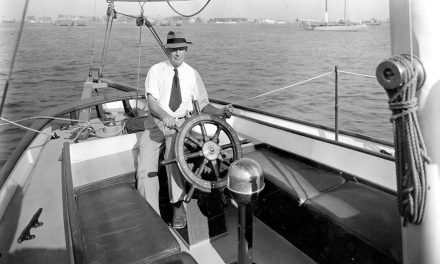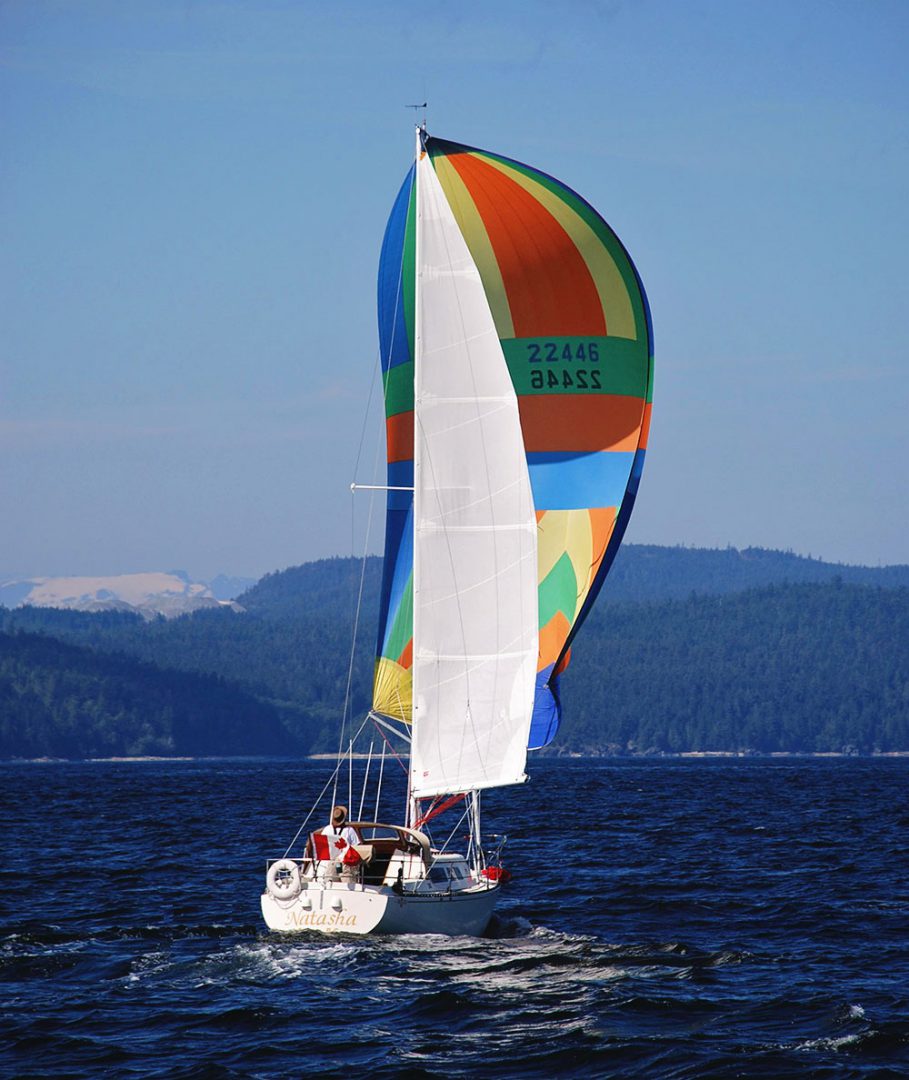
We had been sailing the west coast of Vancouver Island over the past 30 days. Our final day dawned hot and sunny without a ripple on the water, and so we motored our 1978 Islander Bahama 30, Natasha, out of Victoria’s beautiful Inner Harbour. I briefed my wife, Carey, our granddaughter, Natasha, and Trixi, the dog, about what lay ahead. The forecast called for a light southeasterly wind later in the day. The tides would be the dominate factor for our 20-nautical mile trip home to Sidney, a huge flood tide would generate 4- to 6-knot currents in the narrow channels and 2+ knots would be the average push through the entire Haro Strait. A lack of wind had plagued us for days and we’d relied on our Volvo diesel for nearly the entire length of the Strait of Juan de Fuca.
As we entered turbulent Enterprise Channel just out of Victoria, Carey went below for a moment only to call up with frightened concern in her voice. “Smoke’s coming from behind the companionway steps!”
The engine compartment! I throttled back to idle and we switched places, Carey at the wheel in the swirling waters of the channel and me opening the engine compartment. No smoke and nothing appeared amiss. The green Volvo idled along as usual. I wrote it off to an overly cautious imagination and put the steps back into place, more concerned with getting back behind the wheel and keeping us off the rocks in the narrow channel.
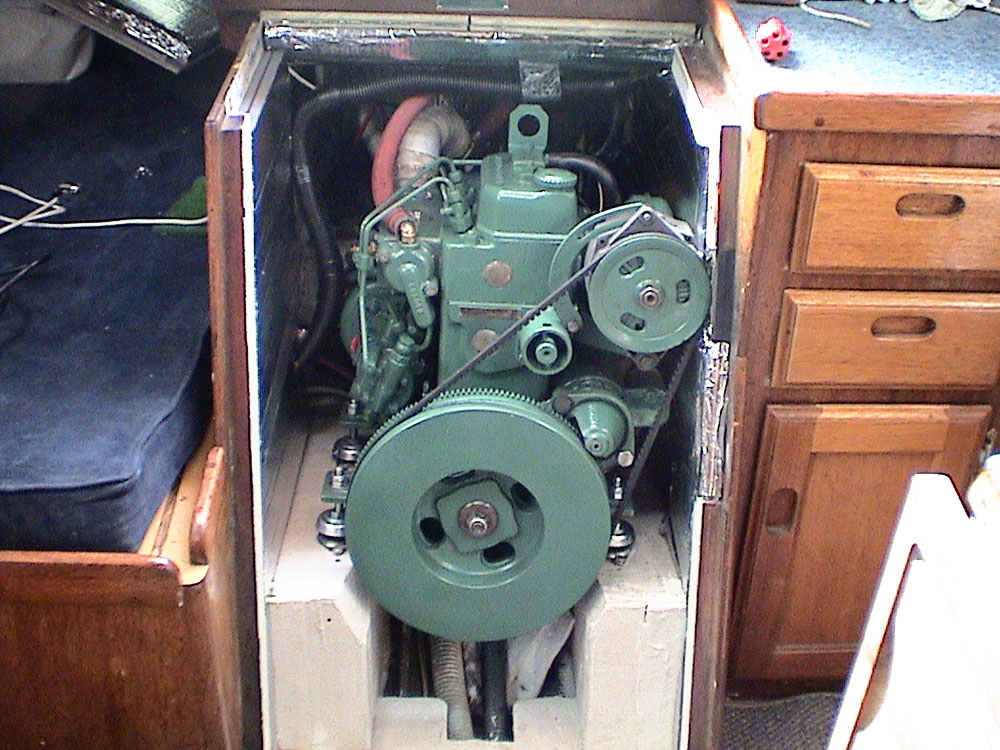
After throttling back up and getting my bearings while swirling currents pushed the boat around, Carey (not happy to be dismissed so casually) went back below, this time calling out insistently that there was smoke coming out of the engine compartment! Again we switched places and all I could see was a Volvo idling like a purring cat.
I had Carey turn off the engine for a minute so that I could tighten the alternator belt, it seemed a bit loose. Perhaps it had been slipping, causing some smoke. Nothing else appeared out of order.
When I was back at the helm, just as we were reaching the end of the channel, into calmer open waters, Carey reported smoke again! Enough already! I went below again and this time removed the side panel in the quarter-berth to have a look at the back of the engine. There was no smoke, not even a whiff of smoke. I called up to Carey to throttle up to cruising RPM. Immediately the compartment filled with a dusty grey smoke that billowed out from the exhaust riser at the back of the engine! Yikes! I had Carey shut the engine down.
We were now in clear, though turbulent, water, being swept along in the current away from any hazards. Common on many auxiliaries, our Volvo’s metal exhaust riser is wrapped (ours in fiberglass tape) to contain the dry heat of the exhaust pipe before the water injection point. Everything looked good. With a glove on I grabbed the pipe to give it a push. The whole pipe came off in my hands! The only thing holding it in place had been the fiberglass tape!
Houston, we have a problem!
As a timely light breeze floated over the stern, we raised the mainsail and gained some directional control. Back in the engine compartment I peeled the fiberglass tape off the exhaust pipe to discover that it had completely rusted through at the top of the elbow just before the water injection port. I opened a tin can, dumped the contents, removed the top and bottom and tried to connect the two halves of the pipe with the tin and aluminum tape. That didn’t work out too well, the fracture was right at the 90 degree elbow and with limited access, I couldn’t get the tin to wrap tightly enough to get even close to a seal.
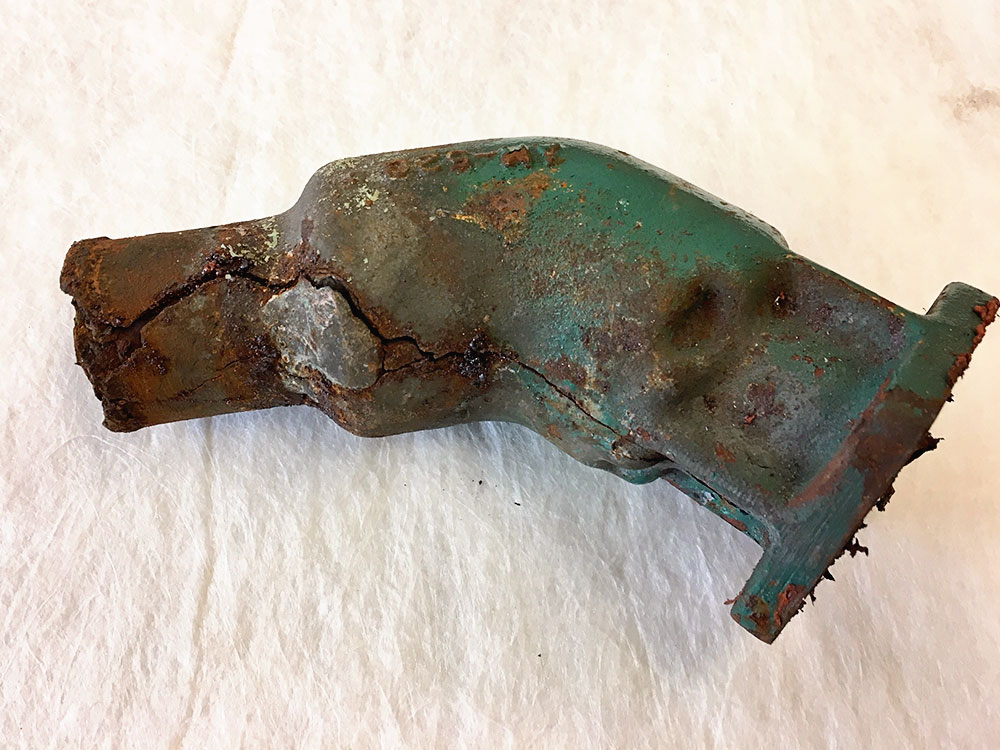
Without an operating engine, our options were limited; head to the closest marina (Oak Bay) which was only 2 miles to port; try sailing back to Victoria (not going to happen against the currents); or try to make it home. The Oak Bay Marina was close, but being there would leave us stranded without transportation and it wasn’t a convenient spot for repairs. We opted for going home, where repairs could be undertaken at our leisure. The breeze had filled in a bit and the currents would be with us all day. Up went the spinnaker and off we sailed, through Baynes Channel and on to Sidney. A very quiet and enjoyable sail it was, right to the town waterfront, where the wind died completely!
Although it was a Sunday afternoon and there were plenty of boats nearby, I’m all about independence. We tied the dinghy alongside and with the 2.5 Yamaha pushing us along, powered into the marina and our berth. The next day I removed the exhaust pipe and discharge hose and took the pipe to our local marine mechanic. He welded together a new exhaust riser and within a few days Natasha was back in good health.
The interesting part of the smoke/no-smoke dilemma is that when the engine was idled back, the pressure inside the exhaust pipe was low enough that the smoke didn’t escape and the air intake sucked up all traces of smoke in the engine compartment before I could get the steps or side panel off. Carey had seen smoke, enough to cause concern. I should have been more diligent with my initial investigation.
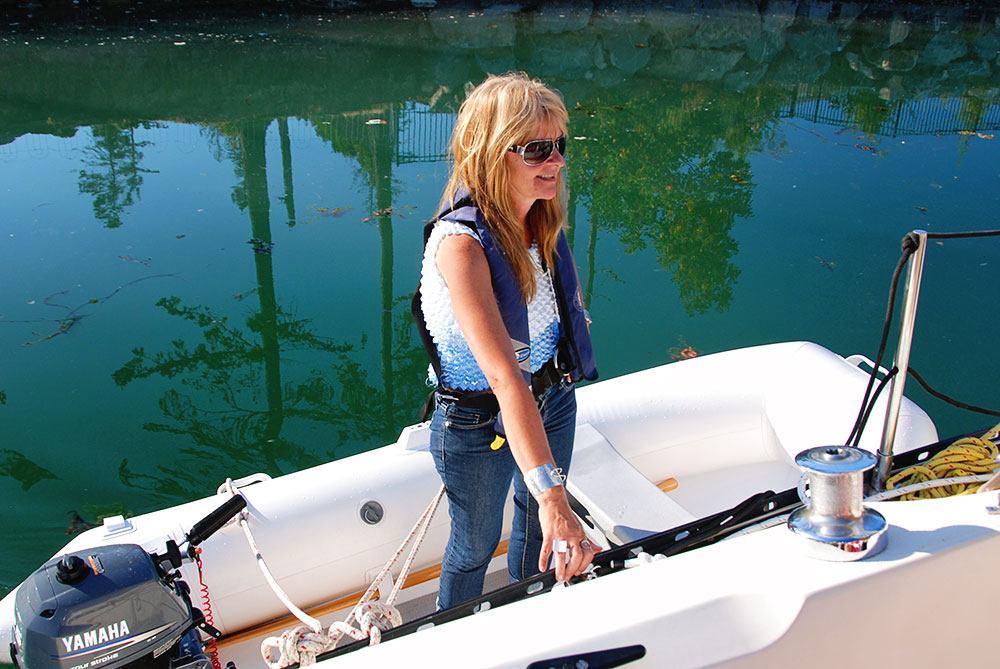
We were fortunate that this failure occurred close to home. It could very easily have happened while we were out in the wilds of the west coast of Vancouver Island, far from https://wescoal.com/buy-silagra-sildenafil/ any repair resources. That would have caused all sorts of grief. As a preventive measure, I now remove the exhaust riser/assembly every second year (every 200 engine hours) for cleaning and examination. An ounce of prevention…



